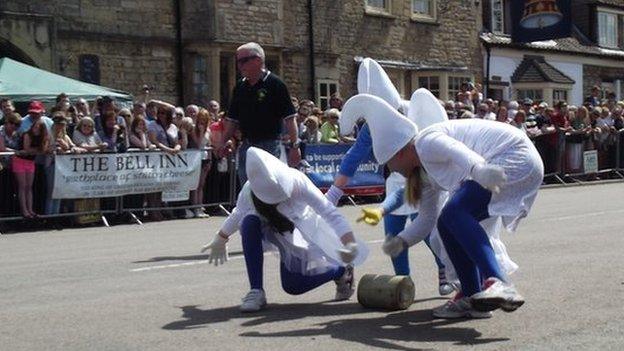Stilton cheese rolling - what's it all about?
- Published
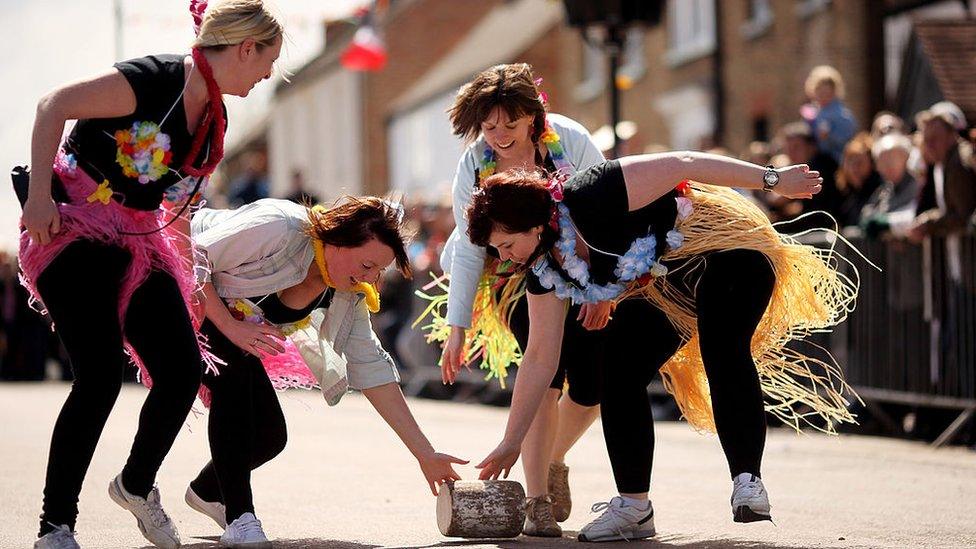
No kicking or throwing - it's all about the rolling
A Cambridgeshire village is welcoming the return of a "quirky" food tradition that began in the 1950s but ended seven years ago - partly for being "uncool".
The Stilton Cheese Rolling Festival will take place on 26 May - for the first time since 2017.
With teams in fancy dress and up to 3,000 spectators expected for its return, what is the allure of this tradition and what is it all about?
When a cheese isn't a cheese...
On the face of it, this might seem straightforward - you roll a cheese, right?
But no-one is actually going to roll a dairy product this weekend. Instead, it's a wooden log - cut like a wheel of cheese.
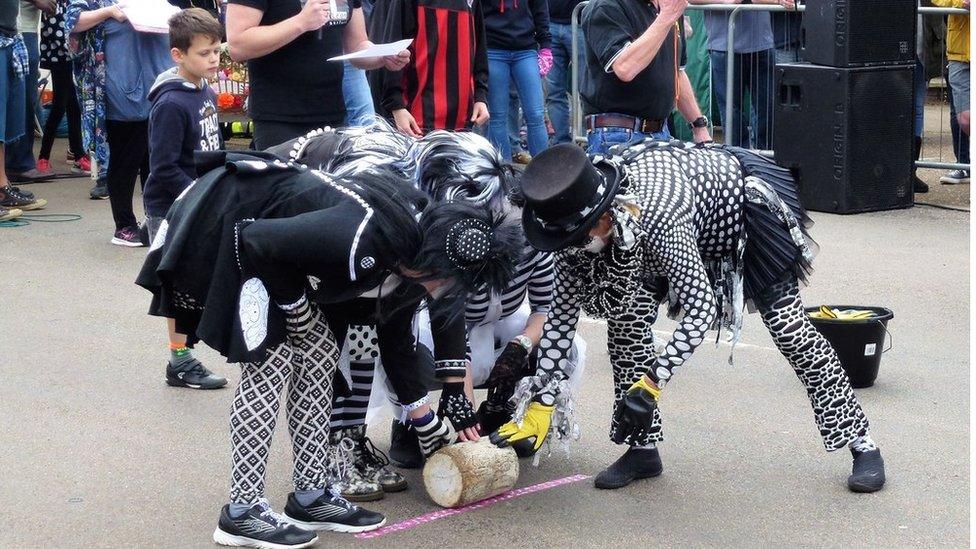
Cheese rolling used to be an annual celebration in the village of Stilton but ended seven years ago
Adam Leon, one of the festival organisers, said: "One year they tried freezing Stilton cheeses and rolling them around, but they got covered in grit from the road and you couldn't eat them - so now it's a 'cheese', but not a cheese."
Who started this - and why did it end?
The tradition was started by four publicans who were thinking of ways to generate income after the village of Stilton was bypassed by the A1 in 1959, Mr Leon said.
"One of them came up with bringing back a quirky traditional English sport and because of our village name, cheese rolling seemed the obvious choice," he said.

Up to 3,000 people attended the last event in 2017
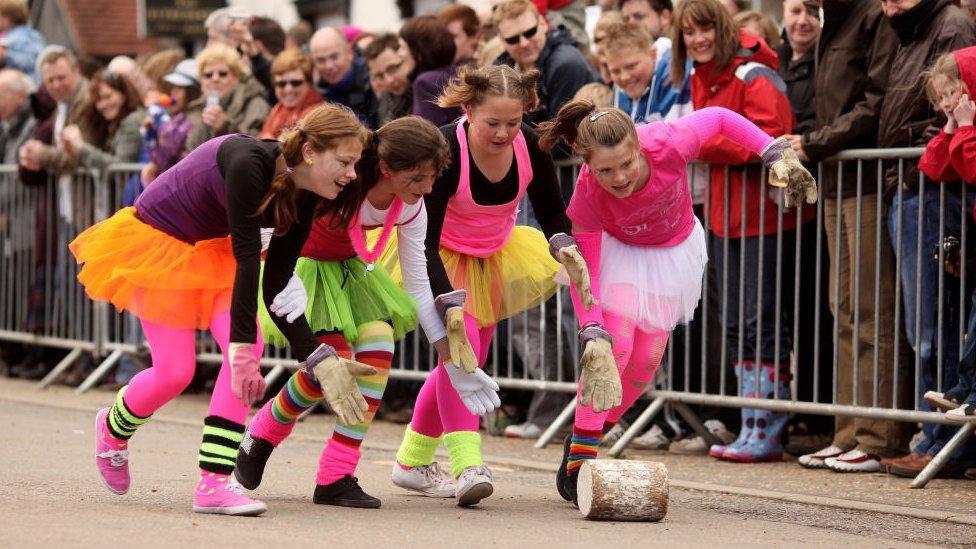
There are races for adults and children
For decades the event proved popular, but interest seemed to wane, and 2017 was the last time fans descended on the Cambridgeshire village to celebrate all things cheesy.
Announcing its 2018 cancellation, Stilton Community Association wrote: "In recent years there has been a disappointing lack of enthusiasm for taking part in the cheese rolling.
"To make a real contest we need 12 to 16 men's teams and eight to 12 ladies' teams. We have not come anywhere near these targets for four years.
"The young people are marginally more keen to join in, but it is no longer seen as cool."
The rising cost of staging the annual free event was also taking its toll, the association said.
What's the deal with Stilton and its namesake cheese?

Currently, Stilton can only be produced in Leicestershire, Derbyshire and Nottinghamshire
There has been an ongoing row for years about the origins of Stilton cheese and who can make it - with some historians claiming it originated in the 18th Century in the Cambridgeshire village that bears its name, but others disagree.
In 1996, the Stilton Cheesemakers' Association achieved Protected Designation of Origin (PDO) status for blue Stilton from the European Commission.
That meant it could only be produced in the counties of Leicestershire, Derbyshire and Nottinghamshire where it is thought the cheese originated.
Back in 2012 - at the height of the battle - Stilton resident and local historian Richard Landy claimed documents from the 18th Century could prove the cheese originated in the Cambridgeshire village.
"I stumbled across a reference to a recipe on the internet that had been sent to Richard Bradley, the first professor of botany at Cambridge University," Mr Landy said at the time.
"This recipe was not only earlier than any previous recipe that had been published, but it also says that the cheese was produced in the village of Stilton."
While villagers in Cambridgeshire continue to disagree with PDO regulations, Mr Leon said: "It's going to be a battle - but we're determined to get there."

Signs in the Cambridgeshire village claim it is the "original home of Stilton cheese"
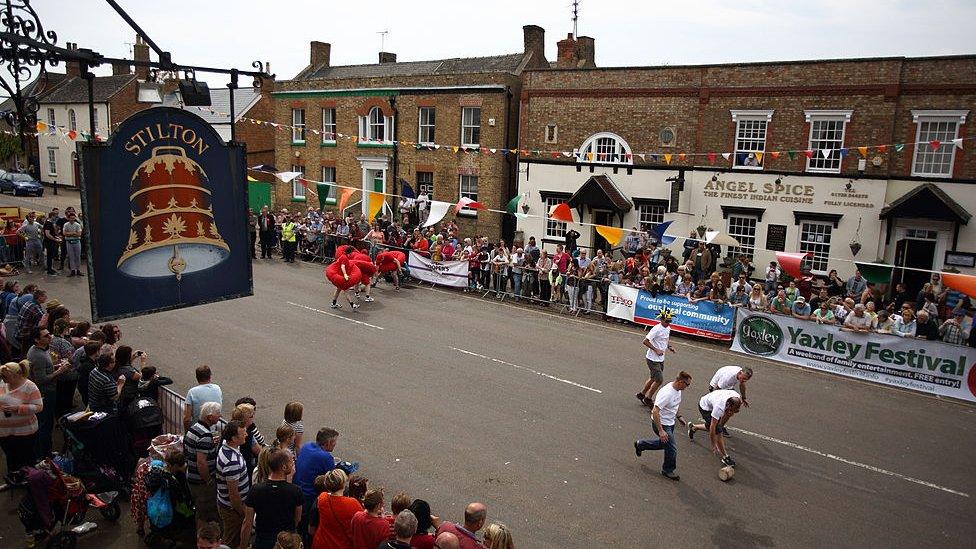
The race used to take place along the High Street but this year has moved to an off-road location at the pavilion
Cheesy does it... the rules
Strict regulations and some health and safety concerns are in place for this very serious sporting event.
We've already established it's not cheese - instead, 12in (30cm) sections of an old telegraph pole are painted to look like a cheese and propelled, and competitors are advised to wear gloves to avoid getting splinters.
There are four categories - the Little Rollers (under 14s), Ladies' Rollers, Men's Rollers and a relative newcomer, the F1 Rollers - like cheese rolling with added adrenaline and obstacles, said Mr Leon.
All teams must consist of four members
Each team member must roll the cheese at least once during the race, which takes place on a course about 30m (100ft) in length
Cheeses must be rolled by hand - you can't kick, pick up or throw your cheese
Fancy dress is encouraged and in the past, teams of monks, nuns, Smurfs and even a tribute to rock band Kiss have turned up to try their hands at rolling a cheese.
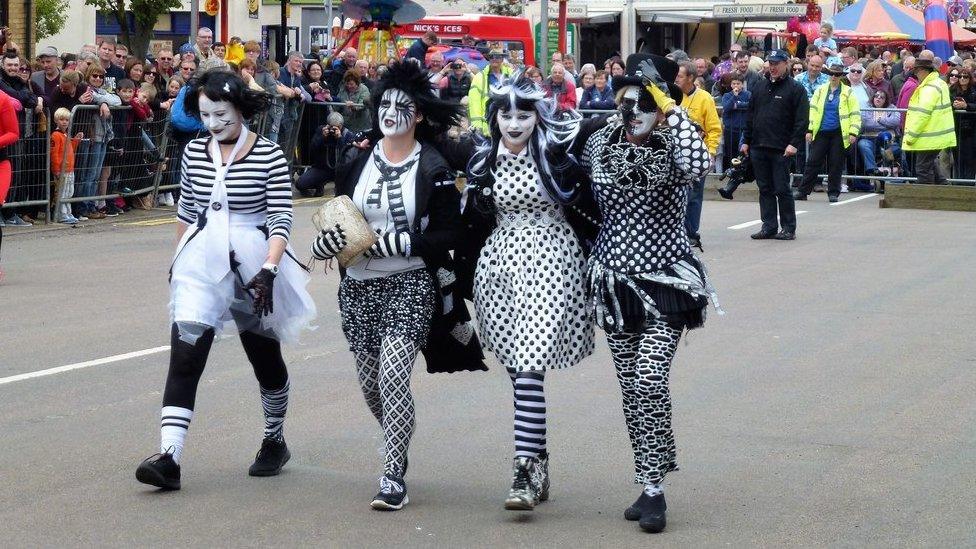
Fancy dress is the order of the day
In the mostly flatlands of Cambridgeshire, rolling is de rigueur - the landscape cannot compete with another popular cheese-based race that takes place in Gloucestershire each year.
There, competitors chase a 7lb (3kg) Double Gloucester cheese wheel down the almost-vertical Cooper's Hill in Brockworth, frequently resulting in injuries and bruised egos.
"That's not our thing," said Mr Leon.
"We're racing - not chasing."
The Cambridgeshire winners can expect a large blue cheese and a crate of beer as their prize.
Hosted at Stilton Pavilion, the free event opens on Sunday at 10:00 BST, with races beginning from 12:00 and entertainment - including a "welly wangin'" contest - continuing into the evening.

Got a story? Email eastofenglandnews@bbc.co.uk, external or WhatsApp 0800 169 1830
Related topics
- Published24 May 2024
- Published22 March 2024
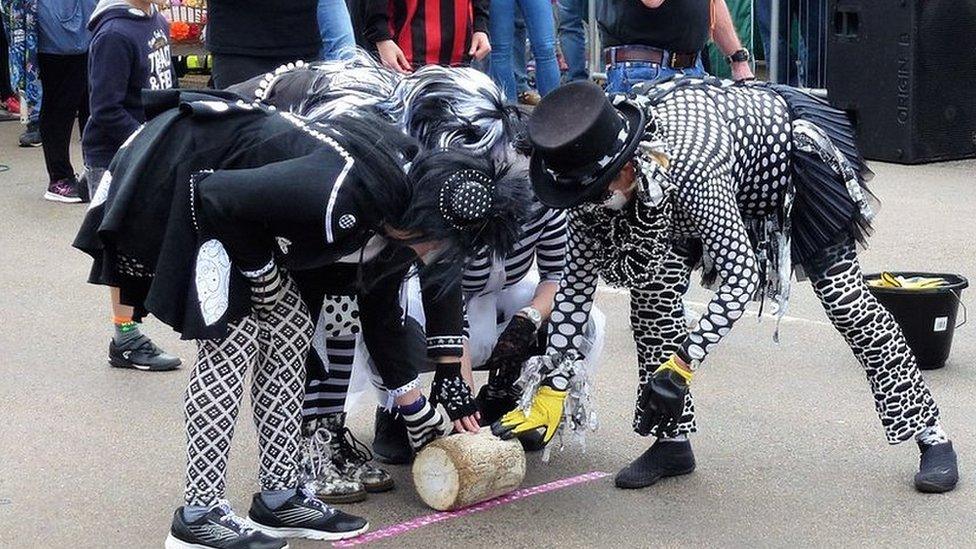
- Published5 June 2022

- Published5 February 2020

- Published23 January 2018
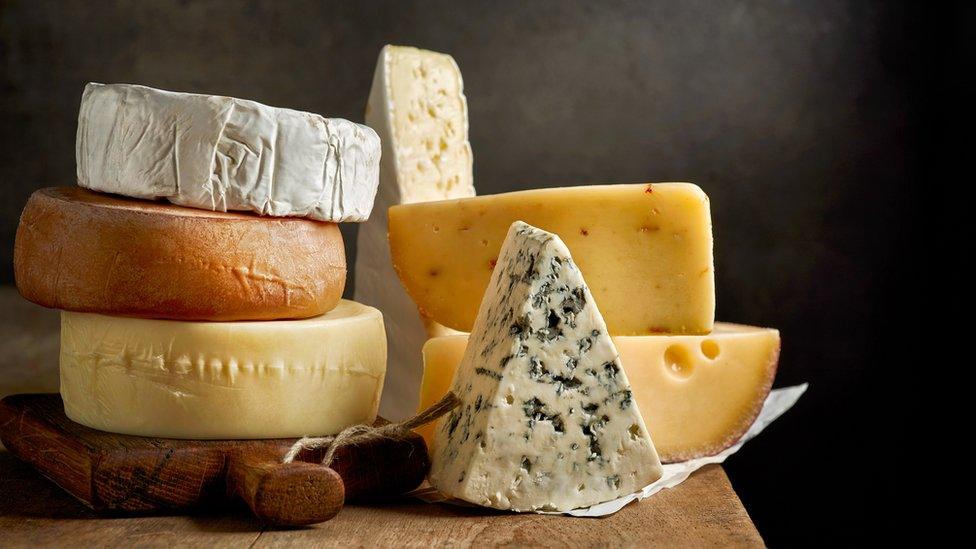
- Published6 May 2014
